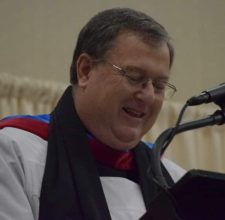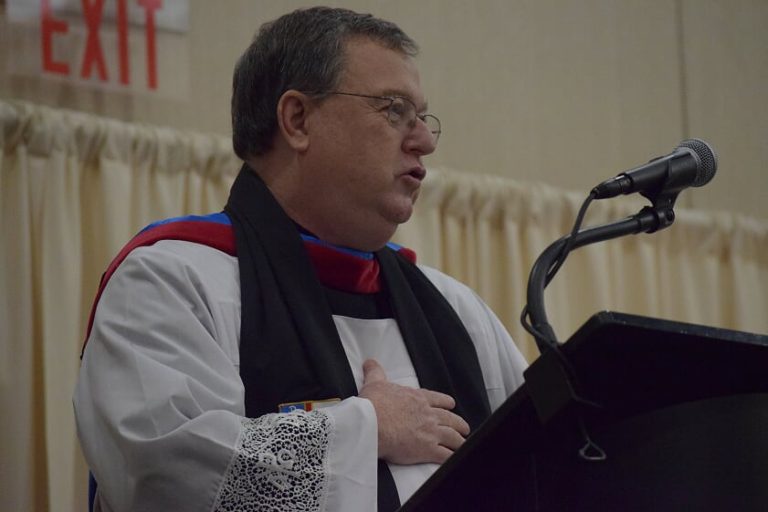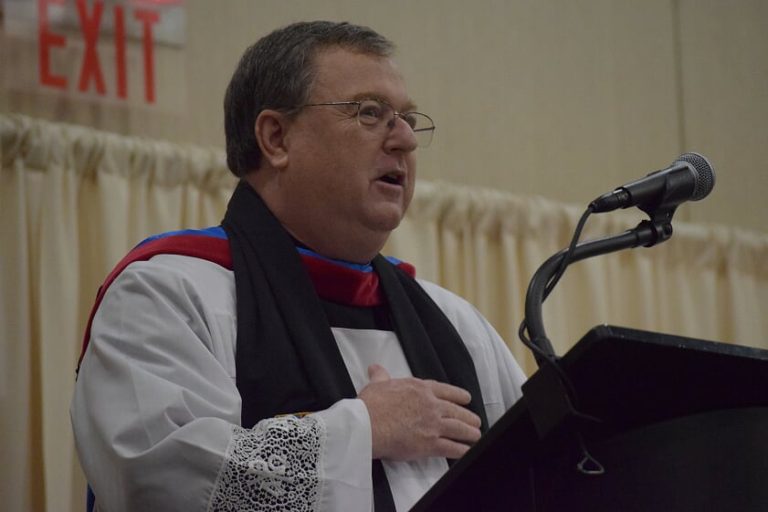Trinity XI; LK 8:9-14; 12 August 2018; Rev. Dennis Washburn, Ph.D
The parable of the Pharisee and tax-collector is about two men praying. Much can be said about Christian prayer. The main emphasis today is on the mental and spiritual attitudes for prayer- and by extension, about attitudes for all of life. Like the two sons in the Parable of the Prodigal Son two weeks ago, here we have two contrasting characters- a self-righteous person and a humble repentant one.
According to St. Luke, our Lord told this parable to some respectable religious people. And for such people in Palestine, starting with a Pharisee going to the Temple to pray seemed positive. Many Pharisees took their religious obligations seriously; they tried to do those things that they thought God wanted. In our parable, the Pharisee seems doing a good thing- he’s praying and thanking God.
The original hearers may have had a slight surprise at the mention of a tax collector going to the Temple to pray. Tax collectors were not noted for being pious, but this one seemed to be making an effort. He seemed humble and repentant.
Up to this point, many hearers were probably comfortable with the parable. Yet, we know that Jesus wanted people to move beyond their comfort zone in religious matters. His main point came in the shocking ending of the parable. He stressed, “I tell you, this man [that is, the tax collector] went down to his house justified rather than the other [that is, the Pharisee]; for every one that exalteth himself shall be abased; and he that humbleth himself shall be exalted.” (Luke 18:14)
Jesus was implying that there were no really “good people.” In reality, there were only different kinds of sinners. And sinners are not distinguished as much by their deeds as they are by their attitudes. Both the Pharisee and the tax collector are sinners. The Pharisee has done many good deeds, but he has failed to realize that he is still a sinner. He manifests spiritual pride before God. He ignores that any good thing in his life comes from God and forgets that God still holds him accountable. So the Pharisee is really a terrible kind of sinner- a proud and unrepentant sinner.
The tax collector, on the other hand, has probably done many bad things. His life is far from pure and respectable. Yet, from a spiritual point of view, he is on the right track. He acknowledges his sinful condition and knows that he must depend upon divine grace and mercy. He prays with a better attitude. This humble and repentant sinner is justified- set right- because he trusts in God rather than in himself.
As church-going Christians, we are probably aware of the teaching of this parable. We know that God humbles the self-righteous and lifts up the humbled sinner. Yet, although we know this, sometimes it doesn’t sink in. One mistake we make is to ignore our own self-righteous tendencies. It is easy for Christians to start thinking like the Pharisee. We can easily become caught up in simple outward performance. Our actions may be appropriate while our thoughts and attitudes are bad. Such attitudes are spiritually dangerous. They damage our souls and people around us.
What all human beings need is true repentance before God. All of us need to stop trusting in ourselves. All of us need to stop excusing ourselves by comparing ourselves to the failings of others. To be right with God, each person must truly regret his/her failings, realize his/her need for divine mercy, and trust in God alone to take away our sins.
Although today’s Gospel is mainly about spiritual attitudes in prayer, there is a subtheme. There are hints about some postures or mechanics of prayer. Over the last 150 years, some Anglicans have come to assume that one always has to stand for praise and hymns, sit for instruction and kneel for confession and intercession. That is an interesting summary, but worship hasn’t always been that way. In the Bible and Jewish tradition, people sometimes knelt for prayer, more rarely prostrated themselves, and rarely sat. But most often, they stood for prayer, as both men do in our Gospel.
Standing has some practical advantages. Most people can stand longer than they can kneel. It takes less space and was certainly more practical in the days before pews and cushions. Standing is certainly better on our knees, especially past age 50. Furthermore, some ancient church fathers even said kneeling in church should be limited to penitential days such as Fridays or Lenten weekdays, but not on Sundays, Easter or other feast days.
And if we look at the instructions in the Prayer Book, they tell us when Cranmer and his comtempraries thought it was important to kneel. For example, in the Communion services of the 1500’s, the instruction for the congregation to kneel only occurs for the Ten Commandments and responses, the General Confession-Absolution, the Prayer of Humble Access and the Reception of Communion.
By these historical observations, I’m not saying that Anglicans should not kneel when we are able, but I am saying that we should not be legalistic or judgmental about it. Kneeling can be a fitting and meaningful way to pray, but it does not in itself make a person more holy.
Another posture implied by our parable concerns the head and the eyes. Despite a bad attitude, the Pharisee starts by praise, and presumably he follows common Jewish practice and prays with head and eyes slightly lifted. We know that Jesus and the early Christians often prayed this way. The tax collector, on the other hand, is emphasizing confession of sin, and so it was fitting that his head and eyes be downcast. Again we must be open to liturgical context and to personal needs in prayer.
Now to a third matter- the position of our hands in prayer. In Jewish and Christian tradition, there have been two common but different traditions about hands in prayer. One is with the fingers and palms of both hands joined in some way. This posture stresses quietness, introspection and meditation. The other is with hands and arms slightly extended and lifted near shoulder level. This posture emphasizes praise and openness to God. In Scripture, it is referred to as lifting up of hands. It was common among clergy and laity in the early church, and still expected of priests in parts of the liturgy. However, even in the ancient church, there were problems with lifting hands. The church father Tertullian (about 200 AD) warns, “We more commend our prayers to God with modesty and humility- with not even our hands too loftily elevated…” Unfortunately, in our time, some people who raise their hands seem more extravagant and less modest or humble.
In conclusion, Christ’s parable of the Pharisee and the publican points us toward proper worship of God. Every human being needs to turn aside from daily activities on a regular basis in order worship and pray. Prayer involves both our inner attitudes and our external postures and gestures.
Let us pray for and pray in humble faith. And whatever our postures and gestures- standing, kneeling or sitting, eyes up or down, hands joined or lifted- they should reflect both our praise Of God and our humble dependence on divine mercy and grace.



